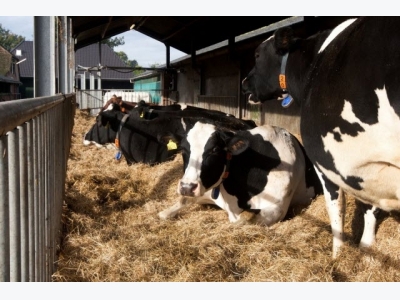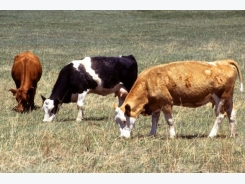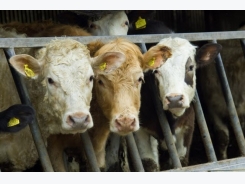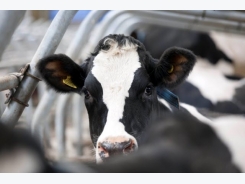2 more lactations with healthy dry cows

80% of all problems arise in the transition period. These problems include milk fever, ketosis and metritis and are a direct result of shortcomings in dry cow management. Why not put more focus on these cows?
An answer to this question is not simple. It can be a lack of clear information. Here lies an important role for vets, feed advisors and hoof trimmers. In addition, there seems to be tunnel vision among farmers and advisors that stops them from seeing the shortcomings of the barns. Thirdly, fear of investing the time and money needed. Even though good management doesn’t have to cost more than bad management. Here also lies a task for advisors: ideally they cannot only provide the right information, but they can also help clients change.
Not eating and resting enough
Problems in the transition period are caused by 2 things:
1. not enough eating and
2. not enough resting.
A dry cow can be up to 100 kg heavier and a lot wider than her counterparts. Therefore, she needs a deep, soft bed in which she can easily lie down and get up. We see big differences in resting time of dry cows: from 6 till 15 hours per day. Cows need at least 14 hours of resting time. 3 minutes more resting, means 1 minute more eating. Next to that, the risk of pressure lameness is a lot bigger with that extra 100 kg.
Pay attention to cow signals
Breaking through this tunnel vision means looking critically at housing and management. The most important thing is making maximum lying and eating possible. Pay attention to the cow signals: a standing cow is a bad signal. Solutions are bigger cubicles for the far off cows and a stress-free calving line for the close-up group and the first 2 weeks after calving. Make sure you have one feeding place per cow. In older barns this can be a bit more difficult, but there are plenty of creative solutions for that.
A good advisor
A lot of farmers are being hold back by the investments they need to do. A good advisor can help them with this. Show farmers how much time and money they’re losing by not changing: Every sick cow costs on average €300. And a lot of trouble for the farmer. Every lactation you lose needs to be compensated with new young stock. In 2016, the average costs for raising a heifer in the Netherlands were €1700. Labour costs not included. Dairy cows produce more in later lactations. Farmers miss this extra free production completely. Insufficient attention for the transition period costs farmers every year again. Not every improvement has to be expensive. Take a first step and see that this earns itself back. After that, go for the next step.
Most feed advisors, vets and hoof trimmers are doing exactly what there being asked: advising a quality ration, treating sick cows and trimming hoofs. Excellent advisors however can also advise on management and housing and help break through tunnel vision. Next to that, a truly good advisor is also able to help farmers change. Don’t take the easy way out. The transition period causes 80% of all problems. Invest in what gives you the most results. The cows deserve it and so do the farmers.
Có thể bạn quan tâm
Phần mềm

Phối trộn thức ăn chăn nuôi

Pha dung dịch thủy canh

Định mức cho tôm ăn

Phối trộn phân bón NPK

Xác định tỷ lệ tôm sống

Chuyển đổi đơn vị phân bón

Xác định công suất sục khí

Chuyển đổi đơn vị tôm

Tính diện tích nhà kính

Tính thể tích ao hồ



 Combatting inefficient nitrogen use in dairy cows
Combatting inefficient nitrogen use in dairy cows  New test for bovine tuberculosis
New test for bovine tuberculosis